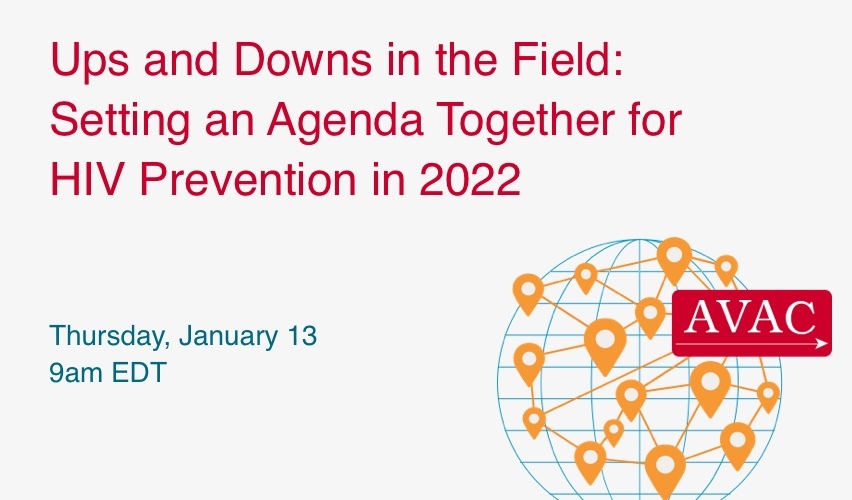Early planning for PrEP investment in PEPFAR countries is the next critical step for this intervention to fulfill its promise and bend the prevention curve of the epidemic in PEPFAR supported countries.
The President’s Emergency Plan for AIDS Relief (PEPFAR) has played a fundamental and unique role in bringing down the number of global deaths from AIDS and advancing global health, since it launched in 2003. But when it comes to preventing HIV, not just treating it, the world remains in crisis. Despite important declines in HIV rates in Eastern and Southern Africa, in others HIV is on the rise. A global health target to bring down new cases of HIV to 500,000 in 2020 was missed–by a lot, throwing off the global effort to end the epidemic by 2030 unless drastic action is taken now.
PEPFAR has an unparalleled ability to marshal data and support the development of effective programs, as it has done for treatment in countries hard hit by HIV. Today, PEPFAR must apply this capacity to HIV prevention in new and expanded ways. Some of the most crucial decisions about PEPFAR’s role in delivering prevention are too often overshadowed by the critical center-stage effort to achieve the 2025 treatment targets and reduce unacceptably high AIDS deaths in many countries. But some less known, behind-the-scenes decisions are also truly vital. One such issue involves PEPFAR budget codes that few may appreciate and love but have an outsized impact on whether the right commitments are made, and prevention reaches those who need it most. Currently, PEPFAR utilizes 19 budget codes for specific areas of HIV programming including testing, treatment, and prevention, including voluntary male medical circumcision.
PEPFAR’s budgeting approach to oral PrEP is a prime example of how HIV prevention must evolve and how PEPFAR’s long standing commitment to transparency can help lead the way. Oral PrEP is a daily pill that can be taken to prevent HIV. Despite its outstanding efficacy, not one of the budget codes PEPFAR uses for HIV programming tracks spending on PrEP. PrEP expenditures are only identified after they are allocated during the annual Country Operating Plan (COP) process used to develop individual country plans. Country programs designing prevention programming, and most importantly civil society advocating for PrEP as part of the COP process, don’t have a clear budget line as COP plans develop to measure and advocate against. As a result, PrEP programming, although a priority for PEPFAR, can sometimes get lost in the shuffle of COP planning. A budget code provides a benchmark to plan against and cements a program as a priority for PEPFAR.
The story of voluntary medical male circumcision (VMMC) rollout highlights the difference a dedicated budget can make. After the WHO and UNAIDS recommended VMMC for HIV prevention 2007, PEPFAR dedicated funds for countries to scale it up, and tracked the effort with an individual budget code. VMMC has since become a core component of prevention programs in PEPFAR supported countries. Investments in VMMC, totaling more than $1.5 billion according to 2017 information, are used for equipment, supplies, monitoring, evaluation, training and reporting. Since 2007, VMMC underwent a scale-up of historic proportions, reaching 15 million people, and contributing to lowering incidence in those countries. The budget code entailed more than funding and services, it incorporated planning, tracking, accountability, and impact. As the figure below suggests, the experience of PrEP roll-out now almost a decade after FDA approval without a designated budget code has been much slower.
PEPFAR’s track record in implementing HIV programs is historic. The program is credited with preventing infection in nearly 3 million babies, providing treatment to more than 17 million people who live with HIV, providing testing to 50 million people, and training 300,000 thousand new health workers. To finally end the epidemic, this same capacity can and must be brought to bear in prevention. PEPFAR’s strong call for programs to include oral PrEP and setting an overall goal of serving 1 million people with PrEP in 2021, become more difficult targets to aim at with vital planning tools missing. PEPFAR’s experience with VMMC taught us that establishing a designated budget code signals that a given program or product is a priority. PEPFAR supported countries are readying now to plan for COP22, to begin October 1, 2022. Getting a budget code for PrEP approved for COP22 would be an important step in planning for PrEP programs so that targets are met, and funding can succeed.
Ten years of effort to roll out PrEP has brought powerful lessons. The field has learned about complex barriers that inhibit HIV prevention. Stigma and economic hurdles put HIV prevention, such as PrEP, beyond reach for the millions who need it. Overcoming these forces will depend on critical investments that must be monitored for effectiveness. These include peer-led adherence support, marketing strategies to understand who must be reached and how to reach them, public campaigns to generate demand, reliable supply chains, specialized training for providers, and integrating HIV prevention with sexual and reproductive health services. Funding this full spectrum of support depends on clear dedicated budgets. The tools planners, advocates, policy makers and programmers need to be in place to double down on what works in HIV prevention, and, finally, end the epidemic.
